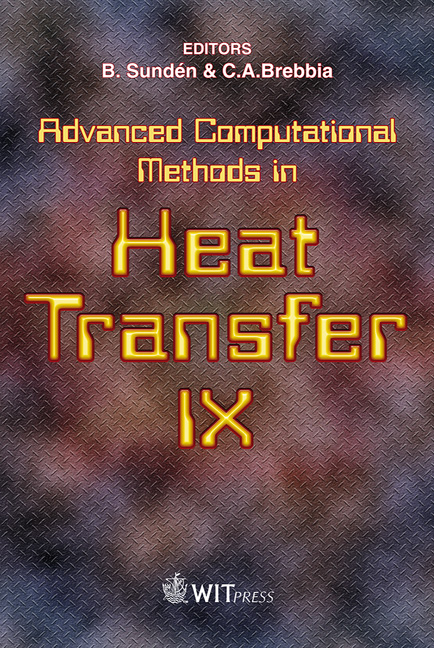Sinusoidal Regime Analysis Of Heat Transfer In Microelectronic Systems
Price
Free (open access)
Transaction
Volume
53
Pages
7
Published
2006
Size
520 kb
Paper DOI
10.2495/HT060431
Copyright
WIT Press
Author(s)
B. Vermeersch & G. De Mey
Abstract
The boundary element method has been used to evaluate the thermal impedances of electronic components in the micrometer range. All simulations gave rise to impedance plots composed of a few circular arcs. This conclusion has also been confirmed by experimental measurements and semi analytical calculations. Keywords: thermal impedance, thermal conduction, AC, numerical calculation, boundary element method. 1 Introduction All books devoted to heat transfer have mainly three chapters bearing the respective titles \“conduction”, \“convection” and \“radiation”. The convective part is usually the most elaborated one for the obvious reason that this is the most important one in many industrial applications. If one is dealing with microelectronics, conduction turns out to be dominant. Indeed, the heat dissipated in the silicon semiconductor can only reach the cooling fins by thermal conduction through the silicon and the packaging materials. It often happens that the largest temperature drop occurs between the chip and the base of the cooling fin. The reason is obvious: the heat sources are so small that the immediate neighbourhood turns out to be the largest and hence most dominant thermal resistance. In most books on heat transfer, the last part of \“conduction” is devoted to time dependent problems (Bejan [1], Incopera and De Witt [2]). A section related to AC thermal conduction (phasor notation) is non-existent. Whereas in electricity and electronics the use of phasor notation ( jω instead of ∂/∂t) is quite common, the application in the field of thermal analysis seems to be rather exceptional. In microelectronics however, an AC thermal analysis has a lot of importance. The
Keywords
thermal impedance, thermal conduction, AC, numerical calculation, boundary element method.





